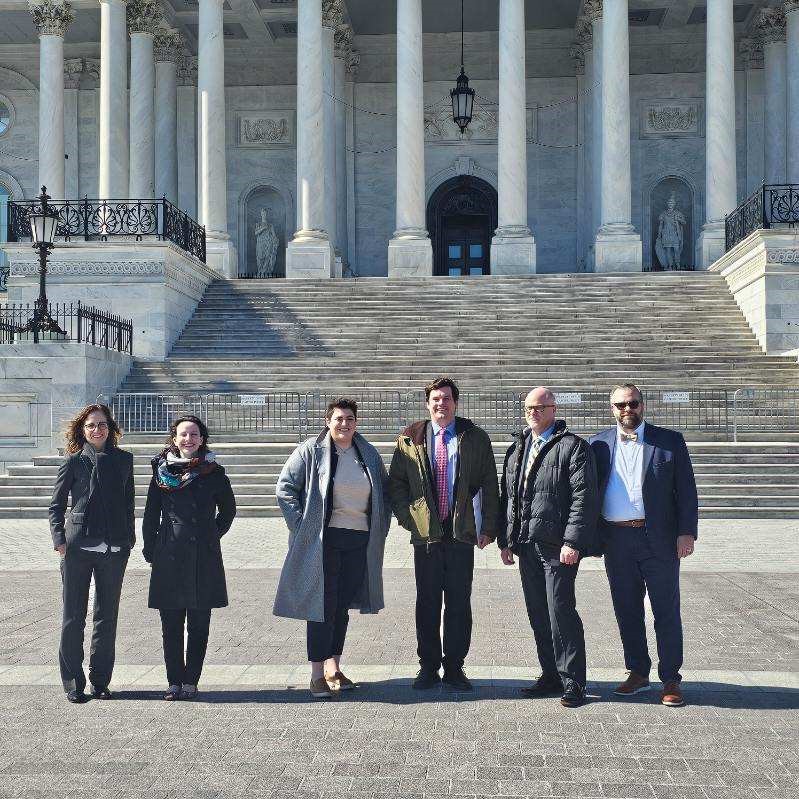On February 29, PULSE partners from across the country met with policymakers on Capitol Hill to provide a real-world perspective on the critical role of pro-innovation mergers and acquisitions (M&A) and other collaborations in the life sciences industry.

From left to right: Desma Polydorou, Novartis; Lara Flynn, Life Sciences PA; Willa Bluestone, Ohio Life Sciences; Richard White, Biocom California; Steve Issenman, HINJ; John Conrad, iBio
PULSE’s nearly 40 partners represent a robust network of innovators – from scientists and researchers to early-stage biotech companies and larger pharmaceutical manufacturers. These companies make up the United States’ world-class life sciences ecosystem. During their visit, PULSE partners – including representatives from Biocom California, Illinois Biotechnology Innovation Organization (iBio), Health Institute of New Jersey (HINJ), Novartis, Ohio Life Sciences and Life Sciences Pennsylvania – met with the offices of members of the House and Senate Judiciary Committees to highlight the unique competitive dynamics that shape the ecosystem.
These meetings came as policymakers at the Federal Trade Commission (FTC) and Department of Justice (DOJ) have increasingly looked to broadly deter M&A, without considering its fundamental role in supporting life sciences innovation.
Key takeaways from PULSE’s discussions on the Hill are highlighted below:
- M&A plays an indispensable role in advancing new treatments and cures for patients. The process of bringing a new medicine to market has been described as a long and costly “relay race” in which no one company can go it alone. M&A allows companies of all sizes to “pass the baton,” combining their unique skills and resources and attracting the necessary investment to shepherd new innovations forward.
- The FTC and DOJ’s efforts to broadly deter life sciences M&A could disrupt a critical path to advance new medicines to patients. Taken together, the FTC & DOJ’s recently finalized merger guidelines and proposed Hart-Scott-Rodino (HSR) premerger notification rule represent a dramatic shift in the Agencies’ approach to M&A. Unfortunately, by failing to consider the unique competitive dynamics of the life sciences ecosystem in favor of broadly deterring M&A, the Agencies have introduced significant uncertainty that risks disrupting the already high-stakes process of developing new medicines.
- Policymakers must take a balanced, bipartisan approach to M&A review and enforcement in the life sciences. For decades, policies like Hatch-Waxman, the Orphan Drug Act and the 21st Century Cures Act have struck a delicate balance between innovation and access, establishing the U.S. as a global leader in developing new medicines. A balanced approach to M&A in the life sciences is imperative to ensure that companies can secure the resources, expertise and investment necessary to unlock the full potential of these policy-driven incentives to innovate.
As PULSE partners underscored in their conversations on Capitol Hill, decades of stable policy have helped to make the U.S. life sciences industry among the most competitive and innovative in the world, with more than 8,000 promising treatments and cures currently in the pipeline across hundreds of diseases. As a result, it is more critical than ever for lawmakers to maintain a balanced and bipartisan approach to competition policy, and preserve M&A as a vital pathway for advancing new innovations.